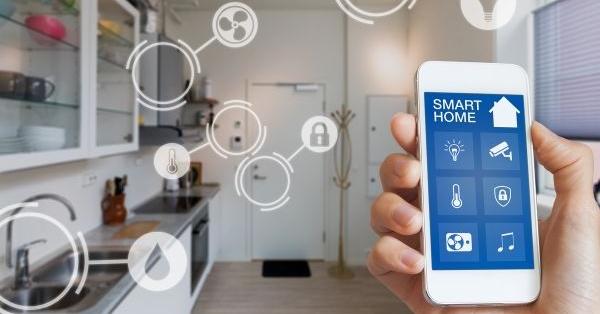Smart technology isn’t just about enhancing convenience or adding a technological edge to your home. It can also help you monitor your home remotely and even act as an emergency response system when you’re away. Some smart home systems can be covered under a home warranty if it needs to be replaced. If you are asking, “What is home warranty?” go online and educate yourself to be able to understand what it may offer.
Homeowners can control and monitor their thermostats, review security camera footage, schedule indoor and outdoor lighting and more with smart systems. They can even set up smart devices to brew coffee or water the lawn and houseplants for them.
1. Automated Lighting
A smart lighting system is an easy way to bring your home some added functionality. For starters, lighting automation can save you money by keeping your lights on at times when it’s most efficient to do so.
You can easily control your lighting with a touchscreen panel, smartphone app, or even just your voice via smart speakers. This makes it easier to adjust the lighting in your house as needed or to set a schedule for each day of the week.
Additionally, your smart lighting can be integrated with security systems to act as a deterrent for burglars. This works by switching your lights on and off at different intervals to make it look like someone is home, which can help prevent break-ins. It can also be set to light up dark areas of your property at night or when motion is detected to improve your safety.
2. Smart Speakers
Unlike traditional stereo speakers, smart speakers have built-in digital assistants (Siri, Google Assistant or Amazon Alexa) that use internal processing to respond to questions or commands with hands-free convenience. These systems can connect to music services like Spotify or Apple Music and interact with a wide variety of voice assistant skills, games, jokes and guides. They can also communicate with other smart devices in the home, like a Philips Hue light bulb or Yale smart lock.
Moreover, they can provide answers to general inquiries and complete basic tasks, such as checking the weather or setting alarms and timers. Increasingly, these systems are also adding security capabilities that track motion or capture video from the camera in a smart doorbell. They may even sync with your smartphone to allow you to call or text friends and family members.
3. Automated Thermostats
Home automation systems with smart thermostats allow homeowners to control their heating and cooling remotely. They function similarly to programmable thermostats, but can learn your habits over time and adjust the temperature automatically. This results in increased energy efficiency and cost savings for the homeowner.
Some smart thermostats can also change the temperature based on movement in your house. For example, they can drop the temperature when you and your guests are arriving for a party so that everyone is comfortable as they enter. Then, they will go back to their regular programming once everyone leaves.
Additionally, some smart thermostats provide energy usage reports on a daily or monthly basis. These reports can be helpful for understanding your usage patterns and identifying potential areas of improvement.
4. Smart Locks
Rather than using a traditional key to lock a door, smart locks allow homeowners to unlock their doors with a smartphone app, a voice command or fingerprint recognition. They also provide an extra layer of security by allowing homeowners to monitor who enters their home via real-time entry logs.
Many smart locks also let you create temporary codes for cleaning services, dog walkers, repairmen or others to grant access — perfect for vacation homes or rental properties. This helps reduce the risk of theft or unauthorized entry by limiting access to specific days and times.
Smart locks can be integrated with other smart systems, triggering lights to turn on, the temperature in the home to decrease or increase and other functions based on the actions taken by the user. This can be an impressive differentiator for home buyers and an ideal selling feature.
5. Smart Doorbells
The simplest smart systems connect with the home’s Wi-Fi and can be controlled by a smartphone app. Users can schedule, monitor and automate home functions like lighting, televisions, thermostats, door locks, security cameras and smart doorbells.
One of the best and most practical smart home devices is a video doorbell that allows homeowners to see and talk to visitors from anywhere they are. It deters intruders and provides valuable evidence if a crime does occur. Many models also include motion sensors that detect movement outside the house, facial recognition technology and video storage to keep track of who visits. Smart doorbells from brands like Ring, Arlo and Eufy can even help manage the increasing number of deliveries from online shopping. They can notify homeowners that a delivery person is arriving, allow them to decline answering the door or communicate with them remotely to ask for a better place to leave the parcel.
